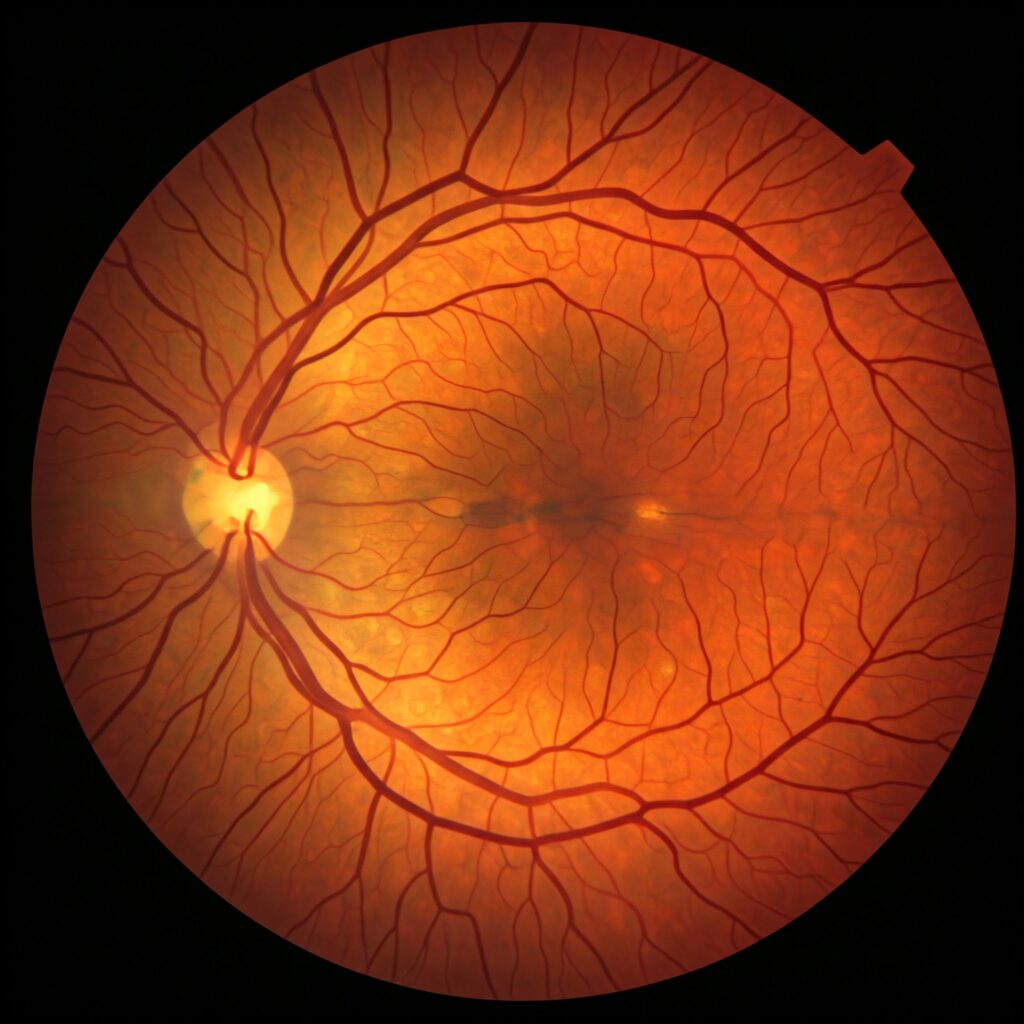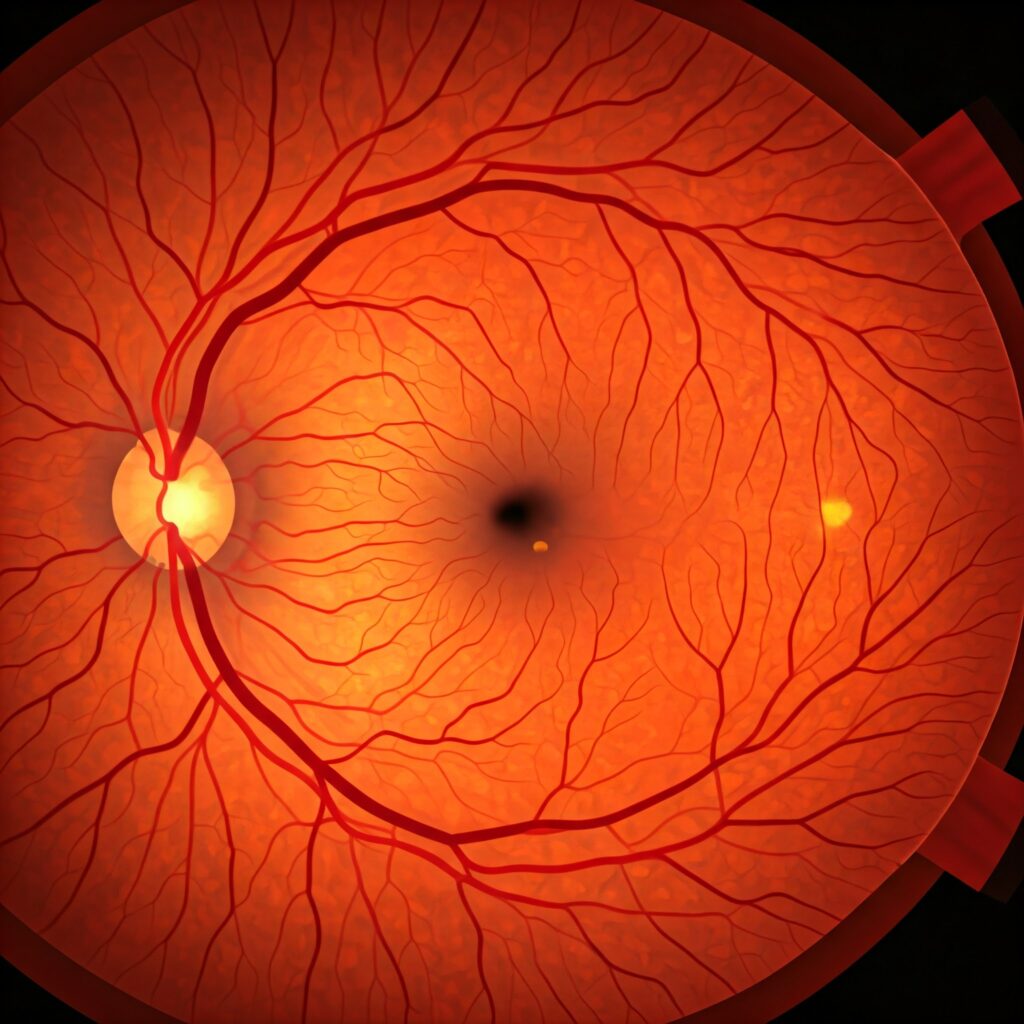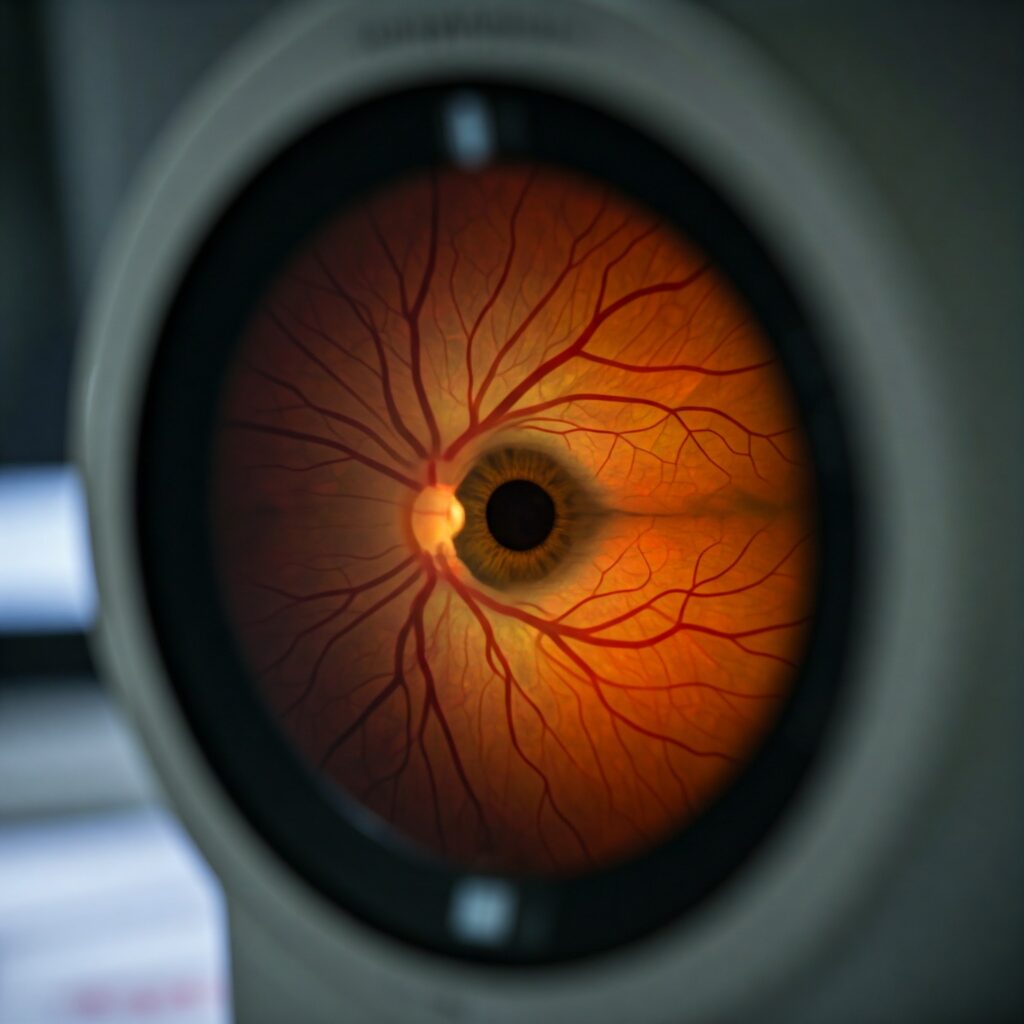Non-Proliferative Diabetic Retinopathy (NPDR)
Non Proliferative Diabetic Retinopathy (NPDR) is a stage of diabetic retinopathy where damage to the retina occurs due to prolonged high blood sugar levels.
It is characterized by microvascular changes, including the weakening of retinal blood vessels, leading to leakage, bleeding, and other abnormalities. Non Proliferative Diabetic Retinopathy (NPDR) is classified into mild, moderate, and severe stages based on the severity of retinal changes
Signs and Symptoms
- Signs:
- Presence of microaneurysms (small bulges in the retinal blood vessels).
- Dot and blot hemorrhages (tiny spots of blood leakage in the retina).
- Retinal swelling or thickening (macular edema) in advanced cases).
- Hard exudates (yellowish deposits caused by leakage of fats and proteins).

Symptoms:
- Often asymptomatic in the early stages.
- Blurry or distorted vision as the condition progresses.
- Difficulty reading or seeing fine details.
- Dark spots or floaters in the visual field (rare in NPDR but possible
Causes
Non Proliferative Diabetic Retinopathy (NPDR) is primarily caused by poorly managed diabetes, which leads to prolonged high blood sugar levels damaging the small blood vessels in the retina. Key factors include:
- Hyperglycemia: Persistent high blood glucose levels weaken blood vessels.
- Hypertension: High blood pressure exacerbates vascular damage.
- Duration of Diabetes: Longer duration increases the risk.
- Dyslipidemia: High cholesterol levels contribute to vessel damage.
- Smoking: Increases oxidative stress and impairs blood vessel health

Features of NPDR
- Mild Non Proliferative Diabetic Retinopathy (NPDR):
- Earliest stage with microaneurysms as the primary feature.
- Usually asymptomatic and detected through eye exams
- Moderate Non Proliferative Diabetic Retinopathy (NPDR):
- Increased microaneurysms, dot hemorrhages, and venous leakage.
- Presence of hard exudates and early macular edema
- Severe Non Proliferative Diabetic Retinopathy (NPDR):
- Extensive hemorrhages, venous beading, and intraretinal microvascular abnormalities (IRMA).
- Significant risk of progression to proliferative diabetic retinopathy
Diagnosis
- Comprehensive Eye Exam:
- Visual acuity test to assess clarity of vision.
- Fundoscopic examination using an ophthalmoscope to view retinal changes
- Imaging Tests:
- Optical Coherence Tomography (OCT): Produces cross-sectional images of the retina to detect swelling or thickening.
- Fundus Photography: Captures detailed images of the retina to identify microaneurysms, hemorrhages, and exudates.
- Fluorescein Angiography: Uses a special dye to highlight blood vessel leakage or abnormalities.

Treatment
- Blood Sugar Management:
- Maintaining optimal blood glucose levels through diet, exercise, and medication is the cornerstone of NPDR management.
- Medications:
- Anti-VEGF injections (like ranibizumab) may be used to reduce macular edema and prevent further vascular damage.
- Laser Therapy (Focal or Grid Laser):
- Used in moderate to severe cases to seal leaking blood vessels and prevent progression.
- Surgical Interventions:
- Vitrectomy: May be necessary in advanced cases where there is significant bleeding or retinal detachment.
- Lifestyle Modifications:
Quit smoking, control hypertension, and adopt a healthy diet to slow progression
